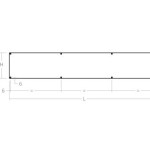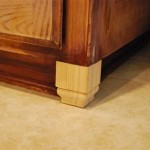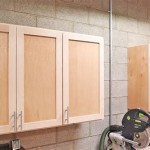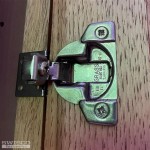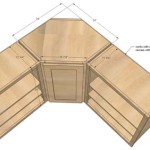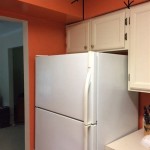Optimizing Kitchen Cupboard Space with Storage Containers
Kitchen cupboards, often the locus of food storage and culinary implements, can quickly become disorganized and inefficient. The strategic use of storage containers offers a solution to maximizing space, preserving food quality, and enhancing overall kitchen functionality. This article explores the various types of storage containers available, their benefits, and how to effectively implement them into a kitchen cupboard organization system.
The challenge inherent in kitchen cupboard organization lies in the diversity of items that must be accommodated. From dry goods like flour and sugar to canned goods, spices, and cooking utensils, the sheer variety of shapes, sizes, and storage requirements can lead to clutter and difficulty in locating specific items. Furthermore, improperly stored food is susceptible to spoilage, pest infestations, and loss of flavor. The adoption of dedicated storage containers addresses these challenges directly, creating a more structured and user-friendly environment.
Effective kitchen cupboard organization is not merely about tidiness; it directly impacts food waste, cooking efficiency, and even the overall aesthetic of the kitchen. A well-organized cupboard allows for quick inventory checks, preventing the purchase of duplicate items and minimizing food spoilage due to forgotten ingredients. Streamlined storage also reduces the time spent searching for necessary items during meal preparation, contributing to a more enjoyable and efficient cooking experience.
Types of Storage Containers
The range of storage containers available is extensive, catering to diverse needs and preferences. Understanding the different materials, shapes, and functionalities is crucial for selecting the most appropriate containers for a specific kitchen and its storage requirements. Common material types include plastic, glass, stainless steel, and ceramic, each offering distinct advantages and disadvantages.
Plastic Containers: These are a popular choice due to their affordability, durability, and lightweight nature. Plastic containers are typically available in a wide variety of shapes and sizes, making them versatile for storing various items. However, it is important to choose food-grade, BPA-free plastic containers to avoid potential health concerns associated with the leaching of chemicals into food. Some plastic containers may also be prone to staining or absorbing odors over time.
Glass Containers: Glass containers offer several advantages, including their non-porous nature, which prevents the absorption of odors and flavors. They are also highly resistant to staining and are generally considered a safer option than plastic, as they do not contain harmful chemicals. Glass containers are suitable for storing both dry and wet foods and can often be used in the microwave and oven (depending on the specific type of glass). A potential drawback is their fragility compared to plastic, requiring careful handling.
Stainless Steel Containers: Stainless steel containers are known for their durability, resistance to corrosion, and hygienic properties. They are an excellent choice for storing dry goods and are particularly well-suited for individuals seeking a long-lasting and sustainable option. While stainless steel containers may be more expensive than plastic or glass, their durability and resistance to staining and odors make them a worthwhile investment. However, they are typically not microwave-safe.
Ceramic Containers: Ceramic containers offer an aesthetic appeal alongside their functional benefits. They are often used for storing dry goods, such as coffee beans, tea leaves, and spices. Ceramic containers can help maintain a consistent temperature, protecting the contents from fluctuations that might affect their quality. Like glass, ceramic can be fragile and requires careful handling.
Beyond material, the shape of the container is a critical factor. Square and rectangular containers are generally more efficient for maximizing cupboard space than round containers, as they can be stacked and arranged more compactly. Containers with airtight seals are essential for maintaining the freshness of food and preventing spoilage. Stackable containers are highly desirable, as they allow for vertical organization, further optimizing space utilization.
Benefits of Using Storage Containers
The implementation of storage containers in kitchen cupboards offers a multitude of benefits, extending beyond simple organization. These benefits encompass improved food preservation, space optimization, and enhanced cooking efficiency.
Food Preservation: One of the primary benefits of using storage containers is the enhanced preservation of food. Airtight containers prevent exposure to air, moisture, and pests, thereby slowing down the spoilage process. This is particularly important for dry goods like flour, sugar, and cereals, which can quickly become stale or attract insects if not stored properly. Clear containers allow for easy identification of contents, reducing the likelihood of forgotten ingredients and subsequent food waste. Proper food storage also minimizes the risk of cross-contamination, preventing the spread of bacteria and ensuring food safety.
Space Optimization: Kitchen cupboards often suffer from inefficient use of space. Ill-fitting packages, oddly shaped containers, and disorganized placement can result in wasted space and difficulty in accessing items. Storage containers, particularly those with uniform shapes and stackable designs, address this issue directly. By transferring food from bulky packaging into space-efficient containers, considerable storage space can be freed up. Stacking containers vertically maximizes vertical space, while clear containers allow for quick identification of contents without the need to rummage through the cupboard. The end result is a more organized and accessible storage system.
Enhanced Cooking Efficiency: A well-organized kitchen contributes directly to improved cooking efficiency. When ingredients are readily accessible and easily identifiable, meal preparation becomes faster and more streamlined. Clear containers eliminate the need to search for specific items, saving valuable time and reducing frustration. Furthermore, organized storage allows for quick inventory checks, ensuring that necessary ingredients are on hand before starting a recipe. This minimizes interruptions during the cooking process and promotes a more enjoyable and efficient culinary experience.
Implementing Storage Containers into a Kitchen Organization System
The successful integration of storage containers into a kitchen cupboard organization system requires a systematic approach. This involves assessing existing storage needs, selecting appropriate containers, and establishing a clear organizational strategy.
Assessment of Storage Needs: The first step is to evaluate the types of items that need to be stored and their specific storage requirements. This includes dry goods, canned goods, spices, cooking utensils, and any other items typically stored in kitchen cupboards. Consider the quantity of each item and its susceptibility to spoilage or pest infestations. Identify potential problem areas within the existing cupboard system and determine the specific organizational challenges that need to be addressed.
Selection of Appropriate Containers: Based on the assessment of storage needs, select containers that are appropriate for the types of items being stored. Consider the material, shape, size, and sealing capabilities of the containers. Opt for food-grade, BPA-free plastic containers if choosing plastic. Select stackable containers to maximize vertical space. Ensure that the containers are easy to clean and maintain. Purchase a variety of sizes to accommodate different items and storage needs. Consider specialized containers for items like spices or coffee beans, which require specific storage conditions.
Establishment of an Organizational Strategy: Once the appropriate containers have been selected, establish a clear organizational strategy for the kitchen cupboards. Group similar items together, such as baking supplies, breakfast cereals, or canned goods. Use labels to clearly identify the contents of each container. Arrange containers in a way that allows for easy access to frequently used items. Store heavier items on lower shelves to prevent accidents. Consider using shelf dividers or risers to create additional storage space and prevent items from being hidden at the back of the cupboard. Regularly review and adjust the organizational system as needed to maintain its effectiveness. A consistent, well-maintained system is key to long-term success.

Fridge Box Holder Kitchen Clear Organiser Cupboard Food Storage Container W Lid
Clarity Front Opening Stackable Bin

Slide Cabinet Pull Out Organizer

5 Budget Friendly Storage Ideas For A Perfectly Organised Kitchen Grillo Designs

Kitchen Cupboard Organisation Ideas Arrange Cabinets

How To Organize Kitchen Cabinets

Kitchen Storage The Container

Clear Storage Container 193x138x64mm 0 99l Muji
Kitchen Cupboard Storage Box With Cover Cutlery Bowl Plate Household Rack Chopsticks Dish Drain

Buy Honexa Plastic Storage Boxes Organisation Baskets For Kitchen Cupboard Office Bathroom Toy Home Tidy Open Bins With Handles 2 Pack Multicolor At Best S In Jiomart
Related Posts


